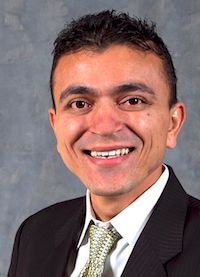Article
Can the EpiFinder App Help Diagnose Epilepsy More Quickly?
Author(s):
EpiFinder, a mobile health application, predicted either an epilepsy syndrome or alternative diagnosis with 86.8% accuracy.

Neel Mehta, MS
A small initial study of the EpiFinder application indicates that the tool’s algorithm may help differentiate between epilepsy syndrome or another diagnosis in adult patients.
The study, conducted at the Mayo Clinic’s epilepsy-monitoring unit, found that the digital tool predicted either an epilepsy syndrome or alternative diagnosis with 86.8% accuracy.
“Both doctors and patients use EpiFinder,” Neel Mehta, MS, co-founder and chief strategy officer at EpiFinder, Inc, told MD Magazine. Doctors can provide the tool in their clinic to patients, but individuals can also use the app of their own initiative. In these cases, Mehta said, the app uses data the patient provided to suggest the best neurologist or epileptologist for them.
All 53 participants in the study (or proxies for those who weren’t able to recount their own experiences), shared details about the event with a trained epilepsy neurologist. The neurologist entered the data into the EpiFinder platform. The app-generated diagnosis was compared to the eventual diagnosis determined by continuous video-EEG monitoring.
EpiFinder determined that 35.8% of patients (19/53 subjects) had an epilepsy syndrome and was not able to predict epilepsy in 50.9% of patients (27/53 subjects), indicating an alternative diagnosis. Through continuous video-EEG the prevalence of epilepsy was determined to be 49.1% (26/53 subjects) and 50.9% of patients (27/53 subjects) were found to have a diagnosis other than epilepsy.
The study authors determined that EpiFinder correctly identified the presence of epilepsy with a sensitivity of 86.4% (95% CI: 65.0—97.1) and specificity of 85.1% (95% CI: 70.2–96.4).
The mobile app provided an incorrect assessment of 13.2% of patients (7/53 subjects). Of those 7, EpiFinder erroneously identified epilepsy in 4 patients and failed to identify the condition in 3 patients.
Dozens of mobile health apps have been reviewed by the US Food and Drug Administration (FDA), however, EpiFinder is outside the scope of FDA regulations, said Mehta. The FDA limits it’s oversight to mobile medical applications that pose a greater risk to patients if they don’t work as intended or apps that give smartphones or other devices the functionality of medical devices that the FDA traditionally oversees.
“We fall into a clinical decision support tool as a part of digital health platforms,” said Mehta. “However, we are working with our healthcare advisory council to make sure that our applications are in alignment per the required approval from the government.”
Jerry J. Shih, MD, director of the Epilepsy Center at University of California San Diego Health Systems, previously told MD Magazine that in recent years guidelines for epilepsy have somewhat loosened the definitions of the condition, creating challenges for non-specialists.
“I think first and foremost for other physicians who are not in the field of epilepsy it's important to understand that the definitions have actually changed or have evolved over the years,” Shih said.
The Mayo Clinic team studying EpiFinder acknowledged that the clinicians included in their study were trained epilepsy specialists and that there remains a need to test the device among other physicians. “Further vetting of the application among nonepilepsy specific providers will be important to assess if the current method for gathering data is universally applicable,” authors said.
A study at Phoenix Children’s Hospital, which will evaluate EpiFinder as a tool for diagnosing pediatric epilepsy syndromes, is already starting. “Additionally, we are currently in talks with several neurologists and epileptologists to conduct studies focusing on adding peripherals and EEG devices to the original tool,” said Mehta.
The study, “Usage of EpiFinder clinical decision support in the assessment of epilepsy,” was published in Epilepsy & Behavior in March 2018 and presented at the American Academy of Neurology Annual Meeting in April 2018.




